
Master 3D modeling for film and video games in under 2 years with CG Spectrum. Get personalized career training online from leading 3D artists from major studios, plus career support and access to a vibrant community. Learn more.
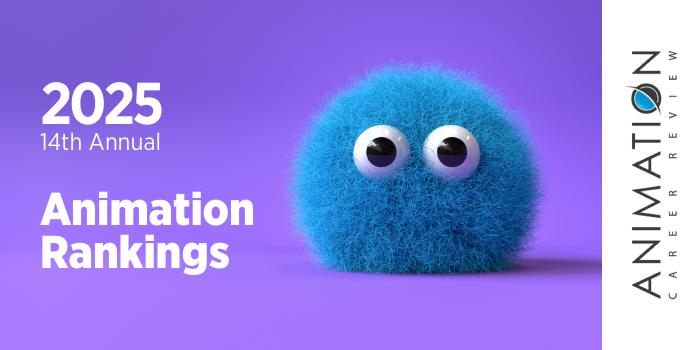
| Ranking | School | State |
|---|---|---|
| 1 | University of California, Los Angeles | California |
| 2 | DePaul University | Illinois |
| 3 | The Ohio State University | Ohio |
| 4 | University of Texas at Dallas | Texas |
| 5 | Columbia College Chicago | Illinois |
| 6 | University of Florida | Florida |
| 7 | California State University, Long Beach | California |
| 8 | Loyola Marymount University | California |
| 9 | California State University | California |
| 10 | University of Utah | Utah |
| 11 | North Carolina State University | North Carolina |
| 12 | Bowling Green State University | Ohio |
| 13 | University of South Florida | Florida |
| 14 | Harvard University | Massachusetts |
| 15 | California State University, Northridge | California |
| 16 | Dartmouth College | New Hampshire |
| 17 | Lipscomb University | Tennessee |
| 18 | Emerson College | Massachusetts |
| 19 | University of Advancing Technology | Arizona |
| 20 | University of Connecticut | Connecticut |
| 21 | Tulane University | Louisiana |
| 22 | University of South Carolina | South Carolina |
| 23 | Rutgers University Camden | New Jersey |
| 24 | Fairleigh Dickinson University | New Jersey |
| 25 | University of Maryland Baltimore County | Maryland |
For our undergraduate degree rankings, we have evaluated animation schools and programs with the best Bachelor of Arts (BA), Bachelor of Fine Arts (BFA), and Bachelor of Science (BS) options. To determine which degree matches your career goals, it is important to understand how each qualification differs.
The Bachelor of Arts (BA) degree is the principal liberal arts degree. Most BA programs require 30-some or 40-some credits, which leaves plenty of flexibility in the form of free electives. BA students can use the free electives to sample widely from other course offerings or to earn an additional credential (a second major, a minor, or some combination of additional credentials).
The Bachelor of Science (BS) degree is offered in areas such as Computer Science, Mathematics, Psychology, Statistics, and each of the natural sciences. The BS is best suited to the student who wants to focus more on courses in the major and on 'collateral' courses (like chemistry or mathematics for a major in Geological Sciences) and is willing to give up some of the flexibility of the BA in return for the greater focus.
The Bachelor of Fine Arts (BFA) degree is considered the most prestigious bachelor's degree that you can receive in the visual arts. This option is for students who wish to gain as much experience and skill in the arts as possible.

University of California Los Angeles (UCLA) is home to the School of Theater, Film and Television (TFT), which serves approximately 680 students enrolled in 15 programs leading to a degree. At the undergraduate level, the School of TFT has a Film, Television, and Digital Media BA (FTVDM-BA) program with a concentration in Animation.
During the first and second years of the program, students focus on foundational courses. In the third year, students will hone their skills in television, film, and digital media production. Students will also have access to curriculum-enhancing courses in areas such as screenwriting and film editing. In the final year of the program, students will immerse in the Animation concentration, consisting of 20 units of upper division coursework.
The UCLA Film, Television and Digital Media BA culminates with a professional internship and final project. Graduates are prepared to pursue careers in the entertainment industry or apply to the UCLA Animation Workshop. School of TFT alumni have been hired at places such as Nickelodeon, Pixar, Walt Disney Imagineering, and DreamWorks.

The School of Cinematic Arts at DePaul University (DePaul) graduated its first class in 2005. Since then, the school has produced directors of hit television shows such as Grey’s Anatomy and The Blacklist; Emmy Award nominees such as Vera Drew; and animators for Guillermo del Toro's Pinocchio, Epic Games, and Gus Van Sant's Don't Worry, He Won't Get Far on Foot.
Housed in Jarvis College of Computing and Digital Media (CDM), the School of Cinematic Arts also provides many programs for students seeking careers in animation. This includes an Animation BA that allows students to create their own focus area through both major and open electives. Examples include Sound Design for Animation; Visual Effects; Stop Motion Animation; 3D Design for Animation; Screenwriting for Majors; Digital Puppet Animation; Illustration Foundations; and Hybrid Animation.
Open electives may be selected from more than 20 Jarvis College minors. Minor examples include Film Production; Designing for Physical Technology; Experimental Filmmaking; Visual Effects; Television Graphic Design; Production; Information Technology; Comedy Filmmaking; and User Experience Design.
Across all School of Cinematic Arts programs, students benefit from courses taught by award-winning filmmakers who are part of one of the nation’s largest full-time animation faculties; access to a state-of-the-art, 32,000 square feet production facility known as DePaul Cinespace Studios; and the new Jarvis Student Center for Innovation and Collaboration. This open, 8,000 square feet space focuses on industry partnerships and multidisciplinary professional learning across emerging technologies. Collaborations and projects between students and faculty emphasize innovation and community needs.
Cinespace and other CDM/SCA studios and facilities provide access to the latest industry-standard animation software, tools, and technologies. This includes Cintiq labs, stop motion stages, fabrication studios, 3D motion capture, motion control, sound studios, professional animation and effects software, and 3D printing.
All DePaul Animation students also have the unique opportunity to participate in the Los Angeles Quarter Program. Over 10 weeks, this immersive experience allows students to intern at major Hollywood studios such as The Jim Henson Company, Disney, Warner Bros. Animation, DreamWorks Animation, Nickelodeon, Sony Studios, and Titmouse.
Additional program benefits include participation in the Premiere Film Festival; the Japan Study Abroad program; Project Bluelight; visiting artists from places such as Disney and Pixar; and access to the Animation Lodge.
The Premiere Film Festival displays and awards the best student work in animation and film. The event attracts jury members from around the country including filmmakers, industry insiders, and festival programmers.
The Japan Study Abroad program is a biennial trip that takes students to Nagoya, Kyoto, and Tokyo for tours of Japanese animation and game studios, cultural sites, and galleries.
Project Bluelight provides hands-on experience in motion picture production to all interested students. Students at The Lodge have opportunities to collaborate on group projects, build their portfolios, and network.
Graduates of the Animation BA program at DePaul University are prepared to pursue advanced roles in industries such as film and television, games, and advertising. Program alumni have been hired at major studios and gaming companies such as Lucasfilm, DreamWorks Animation, Electronic Arts (EA), Warner Bros. Animation, Google, Cartoon Network, Disney Animation Studios, Epic Games, Nickelodeon, LAIKA, Blizzard Entertainment, Iron Galaxy Studios, and BioWare.

The Ohio State University (OSU) belongs to an elite group of universities that have land-, sea-, and space-grant designations. The largest campus in Columbus, OSU houses more than 200 academic centers and institutes; 350 study abroad programs across 70 countries on six continents; and nearly 20 colleges and schools. This includes the College of Arts and Sciences, which provides more than 250 majors, minors, certificates, and graduate programs to approximately 19,310 students.
For students seeking a career in animation OSU provides a Moving Image Production program that leads to a BA (MIP BA). Established in 2017, the MIP BA is a collaboration between the Advanced Computing Center for the Arts and Design (ACCAD), and the Departments of Art; Theatre, Film, and Media Arts; and Design. This interdisciplinary program combines live-action and animated filmmaking, with studio practice in narrative, animation, documentary, and experimental filmmaking.
Students will complete 38 credits in the major and 15 credits in the Film Studies. Course examples for the program include Computer Animation: Form, Light and Motion; Procedural Animation; Motion I-II; Group Studies in Digital Animation and Interactive Media; Animation Techniques and Practices; Motion Capture Production and Experimentation; Designing Immersive Virtual Environments; Concept Development for Time-Based Media; and Motion Studies Through Hand-Drawn Animation.
OSU MIP BA students will also have opportunities to take additional production, screenwriting, and other courses through electives within the program and through the Advanced Computing Center for the Arts and Design (ACCAD) and the Wexner Center for the Arts.
Other program benefits include participation in OSU’s internship and study abroad programs. MIP BA students have interned with or established careers with CBS, Netflix, YouTube, Sundance, Starz, 3 Arts Entertainment, 4th Row Films, and Bungalow Media, among others. Students have also worked on productions such as Captain America: The Winter Soldier, Fast and Furious 8, Carol, and The Late Show with Stephen Colbert. Possible study abroad locations include Dublin, Rome, London, Copenhagen, Prague, and Germany.
Graduates are prepared to pursue roles in animation, film and television, multimedia design, computer graphics (CG), game design, augmented and virtual reality (AR/VR), visual communication, directing, motion graphics, interaction design, mixed reality (MR), human-computer interaction (HCI) design, user interface design (UI), and visualization.

University of Texas at Dallas (UT Dallas) is home to the state’s first arts and technology degree. Launched in 2002 and housed in the 50-year-old Harry W. Bass Jr. School of Arts, Humanities, and Technology (Bass School), the program is known as Arts, Technology, and Emerging Communication (ATEC). Today, the program has expanded to include BA, MA, MFA, and PhD degrees.
Across pathways, ATEC students benefit from interactions with guest speakers from major studios such as Pixar, DreamWorks, and Disney; seminars and lectures led by industry professionals; project-based exercises; and applied and experimental research in collaboration with instructors in varying areas of expertise.
For student productions, research, and other projects, the ATEC program provides access to Bass School research labs and creative practice studios such as ArtSciLab; LabSynthE; the Narrative Systems Research Lab; The Studio for Mediating Play; the Creative Automata Lab; Fashioning Circuits; the Cultural Science Lab; the 3D Studio; the Emerging Gizmology Lab; SP&CE Media; and the Public Interactives Research Lab (PIRL).
Students also have access to the ATEC Animation Lab. A major component of the lab is the simulated animated studio experience (SASE). Over two semesters, a crew of 40 SASE students will have the opportunity to design, write, produce, and direct a two-minute CG animated short film. Examples of past productions include Bad Timing (2022), Octo Ninja (2021), Night Shift (2020), and Stargazer (2019).
Within the UT Dallas ATEC program is a BA program with an Animation and Games (A&G) concentration. ATEC coursework for the BA option explores computer animation, game studies, user interface and user experience (UI/UX) design, motion graphics, and digital fabrication. Course examples include Animation Origins and Techniques; Programming for Digital Artists; Drawing for Animation; Computer Animation; Lighting and Composition; Scripting for Animation; Game Design; Rigging; Level Design; Modeling and Texturing; History of Visual Effects; Animation and Game Fundamentals; and Time-Based Media.
Students will also complete 30 semester credit hours of required electives. Examples include Animation Lab I-II; Virtual Environments; Procedural Animation; Character Design; Motion Capture Animation; Game Production Lab I-II; Stop Motion Animation; Virtual Reality; Animation Studies; Storyboarding; Experimental Animation; Motion Design Lab I-II; Topics in Animation; and Real Time Texturing.
Depending on the program, culminating experiences may include a capstone project, thesis, or research project. Most experiences have an exhibition component.
Graduates of the ATEC programs at UT Dallas are prepared to pursue careers in areas such as 3D computer animation, game design and development, virtual environments, medical and scientific visualization, advertising, modeling and simulation, architecture, publishing, law, education, and training. Program alumni have been hired at companies and studios such as Disney, Blizzard Entertainment, 900lbs of Creative, Cisco Systems, JP Morgan Chase, Texas Instruments, AT&T Foundry, and Gearbox Software.

The School of Design at Columbia College Chicago houses an Animation and Computer Graphics BA with opportunities to customize a concentration area. Past students have specialized in everything from traditional animation to game art to computer vision for visual effects (CVFX). Columbia College also lists an Animation BA for the 2024-2025 academic year.
The Animation BA has several options and areas of study including hand drawn animation, cinema visual effects, stop motion animation, computer animation, alternative forms of animation, or a combination of all areas. The Computer Animation BFA is a professional degree with advanced courses in story, critical studies, and CG Animation. The Traditional Animation BFA is also a professional degree that focuses on advanced animation, story, classic art, and critical studies.
Students in all programs may participate in the Animation Studios in LA Program. Activities for this one-credit program include specialized classes, tours, employment screenings, and portfolio reviews. Past participating studios include Nickelodeon, DreamWorks, Cartoon Network, Disney, and Warner Bros.
Columbia animation students also have access to state-of-the-art classrooms and workshops; Cintiq labs, stop-motion labs, and traditional animation camera labs; instructional spaces for stop-motion and traditional animation projects; and the Animation Equipment Center. Other program benefits include the internship program, which provides opportunities to work at local studios, and the study abroad program, which provides access to faculty-led experiences (and others) in more than 20 countries.
Across programs students can expect to take courses such as History of Animation; Storyboarding for Animation; Scriptwriting; Animation Layout; Alternative Strategies in Animation; Animation Maquettes; Environmental Design and Modeling; Digital Animation Techniques Current 2D Trends; Acting for Animators; Drawing for Animation I-II; Digital Animation Techniques: Ink, Paint & Composite; and The Business of Animated Content.
The culminating experience for the programs is the production of an animation portfolio and an animated film to be presented at Manifest—Columbia Colleges annual art festival highlighting graduating students work.
According to the most recent available figures, 98% of Columbia College Animation graduates are employed or pursuing an advanced degree within a year of graduation.
Animation alumni have been hired at major networks and studios such as Pixar, Nickelodeon, DreamWorks, Warner Bros. Animation, Cartoon Network, Disney, Microsoft, and Weta Digital. They have worked on films and series such as Frozen, Pocahontas, The Lion King, Coco, Robot Chicken, Brave, The Lego Batman Movie, and UP.
Program alumni have also gone on to win Oscars and Emmy Awards, while others have launched their own independent studios and freelance businesses.

University of Florida (UF) is home to the College of the Arts (COTA). Established in 1925, COTA houses the fully accredited schools of Music, Dance, and Theater and Dance. Accreditations include National Association of Schools of Art and Design (NASAD); National Association of Schools of Music (NASM); National Association of Schools of Theatre (NAST); and National Association of Schools of Dance (NASD).
COTA also houses the Center for Arts in Medicine and the Digital Worlds Institute. Founded in 2001, the Digital Worlds Institute began as a partnership between COTA and the College of Engineering. Today, the Digital Worlds Institute has expanded to include six additional colleges, with a focus on advanced media systems.
Within the Digital Worlds Institute at University of Florida is the Digital Arts and Sciences BA (BADAS) that explores the 12 principles of animation; industry-standard techniques and tools for interactive games, media, and film; game content creation and system development; and the entire process of pre-production, production, and post-production.
The program takes place in a project-based learning environment, allowing students to gain hands-on experience and team-building skills. Students also can select elective courses from the Institute's offerings in animation, game design, and experience design and production. Other program benefits include high-tech classrooms; access to state-of-the-art studios and facilities; internships at major production studios; and participation in the study abroad program.
Students may also take electives outside of the UF BADAS program. The remaining courses include BADAS core requirements and general education. BADAS core courses explore areas such as 2D and 3D animation; digital technologies; mobile games; digital storytelling; game content creation; design; writing for interactive media; digital visualization; and production.
Course examples include 2D Digital Animation Techniques; 3D Animation Techniques; Digital Storytelling; 3D Character Animation; Advanced Digital Animation Techniques; Advanced 2D Digital Animation Techniques; Motion Design; 3D Modeling and Texturizing; Design and Production Studio I-II; Production of Immersive Environments; Project Methodologies; and Writing for Interactive Media.
The BADAS program at University of Florida culminates with the Senior Project in DAS and Digital Portfolio courses. Graduates are prepared to pursue positions in areas such as animation, game design, filmmaking, television, advertising, science, and technology.
Digital Worlds Institute graduates have been hired at major companies and studios such as Sony Pictures Imageworks, Electronic Arts (EA), DreamWorks Animation, Microsoft, Lockheed Martin, Epic Games, HSN, Sony Music Entertainment, Insomniac Games, the PGA Tour, Trip Advisor, and Hawke Media. Some Digital Worlds alumni have also gone on to launch their own studios or freelance businesses.

California State University, Long Beach (CSULB or Cal State Long Beach) has a long list of notable alumni. One of the most accomplished is Steven Spielberg. This renowned filmmaker attended CSULB for three years, paused his studies to pursue filmmaking, then returned under a pseudonym 30+ years later to complete his film degree in the College of the Arts (COTA).
More than 3,000 students and over 250 faculty members call COTA home, making it one of largest and most popular colleges at CSULB. With six separate departments including Art; Film and Electronic Arts; Design; Theater Arts; Dance; and the Bob Cole Conservatory of Music, COTA houses state-of-the-art production facilities, studios, and work spaces; five separate, customizable student art galleries; the 1100-seat Richard and Karen Carpenter Performing Arts Center; and University Art Museum.
The College of the Arts also houses dozens of programs leading to a BA, BFA, BS, MA, MFA, Bachelor of Music (BM), Master of Music (MM), and an MFA/MBA. Animators seeking a flexible undergraduate degree may enroll in the multidisciplinary Art BA program. Covering a wide range of creative disciplines the Art BA has an option in Studio Art, with required courses such as 2D Media, Art History, and 3D Media.
Art BA students also have access to courses such as Intro Studio: Animation; Foundation Computer Art; Foundation Life Drawing; Intro Studio: Illustration – Rendering; Foundation Transdisciplinary Practice; and Safety and Sustainable Practices for Studio Artists. All students will take upper division courses from COTA’s Animation, Illustration, Drawing and Painting, and Photography areas, among others. The program culminates with the Art or Art History Capstone course.
Graduates the COTA programs at California State University, Long Beach are prepared to pursue careers in the entertainment industry, as well as game design, television, advertising, and publishing among other fields.
CSULB has partnerships with recruiters in animation, games, and media arts. Examples include Walt Disney Animation Studios, Cartoon Network, Pixar, Sony Pictures Animation, Activision Blizzard, Shadow Machine Studio, and KCET Studios. Graduates are routinely hired at these and other places such as MGA Entertainment, Fox, and OPR Communications.
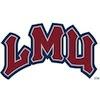
Loyola Marymount University (LMU) focuses on providing real-world experience in a faith-based academic environment. With views of the Pacific Ocean and the Hollywood sign, LMU is also a leader in creative fields such as film and television.
The School of Film and Television (SFTV) at Loyola Marymount University is home to the first program to build a motion-capture lab with courses in virtual cinematography and pre-visualization. Known as the Walter and Grace Lantz Undergraduate Animation Program, this pioneering course of study leads to a BA or a minor.
With small class sizes that provide high student-faculty interaction, both options provide access to state-of-the-art facilities such as a 4,000 square feet premiere studio designed by Gensler; nearly a dozen smart classrooms; a 28-seat FTV screening room; a render farm with 30 nodes of rendering animation frames; and the Student Production Office (SPO), which assists students with completing individual projects.
SFTV Animation BA students also have opportunities to complete an internship with one of more than 400 partner companies and studios. Examples include Disney, Nickelodeon, HBO, DreamWorks, and Netflix. Internships are also available to BA students through LMU’s study abroad program. With more than 100 locations, experiences are also immersive, and either faculty-led, service-learning based, or research-based. Location examples include Paris, Beijing, London, Amsterdam, Kyoto, Budapest, and Seoul.
Students in both programs will explore television, film, game design, and other media forms while gaining hands-on experience in storytelling, 3D filmmaking, stop-motion, visual effects (VFX), and motion-capture. Animation minor students will complete 18 credit hours including Discovering Animation; Visual Story Development; and Introduction to 3D Computer Animation, Introduction to Interactive Animation, or History of Animation. The remaining courses will come from 300 and 400 level animation electives selected under the direction of the Chairperson.
Students in the LMU SFTV Animation BA program will complete 120-130 credit hours of study across eight semesters (four years). The required 24+ credit hours of electives allow students to select a focus area. Students can also add the minor in Interactive, Gaming, and Immersive Media (IGI).
Course examples for the Animation BA program include Discovering Animation; Digital Toolbox; Introduction to 3D Computer Animation; History of Animation; Intermediate Animation Workshop; Visual Story Development; Figure Drawing Workshop; Art of Screen Media; Rhetorical Arts; and Animation Practicum.
The LMU Animation BA culminates with the Senior Thesis Project/Production course worth three credit hours. Graduates are prepared to pursue positions in fields such as animation, film, and television; forensic animation; game design and development; animation for science and medicine; advertising and marketing; and art education.
To date, more than 400 employers have hired LMU SFTV alumni. More than 80% of alumni are working in the field and more than 10% go on to enroll in a graduate studies program.
Animation program alumni have created successful animated series such as Johnny Bravo (1997- 2004, Cartoon Network) and they have worked on other major productions and series such as Superman: Doomsday; The Simpsons; Green Lantern: First Flight; Wonder Woman; and The Simpsons Movie.
LMU SFTV alumni have also been hired at major companies, networks, and studios such as Sony Pictures Animation, Nickelodeon, Viacom, Paramount, Sony Playstation, Walt Disney Animation, Cartoon Network, Warner Bros., Amazon Studios, Disney/ABC, Random House Studios, DreamWorks, NBCUniversal, BET Networks, HBO, 21st Century Fox (founded by Rupert Murdoch), E! Entertainment, and Netflix.

California State University, Los Angeles (Cal State LA) sits on a 70-acre hilltop campus near the city’s downtown area, providing easy access to LA’s cultural center. The school also houses the College of Arts and Letters, which houses ten well-defined departments focusing on everything from art, film, and music to languages and philosophy.
Among the college’s departments is the Department of Art. Accredited by the National Association of Schools of Art and Design (NASAD), the department provides BA, MA, and MFA programs, as well as a certificate in Fashion, Fiber and Materials, and a minor in Art.
For animators, the Art Department has an Art BA with an Animation Option that explores traditional, experimental, and contemporary animation. Consisting of 120 units of study (with 57 in the option), the program emphasizes collaboration and hands-on learning in digital classrooms, labs, and other facilities. Students in the program have access to a state-of-the-art stop-motion animation lab; a Tool Crib; and the Design Library.
Students in the Animation Option will take core requirements such as Visual and Critical Studies in Contemporary Art and Design; Survey and Studio: Introduction to Drawing; Art and Design in the Community; and Digital Art Fundamentals. Animation Option requirements include Story and Visualization; Advanced Animation; Art and Motion; Experimental Animation; Digital Modeling; Two-Dimensional Animation; Introduction to Life Composition; Three-Dimensional Animation; and World Animation History.
Students will also complete a capstone project across two courses including Capstone I: Preparation and Capstone II: Production. Students will have the opportunity to exhibit their capstone projects (and others) in the student-run COMA Gallery and/or Cal State LA’s Ronald H. Silverman Fine Arts Gallery.
Graduates of the Art programs at Cal State LA are prepared to pursue careers in areas such as animated filmmaking, game art, visual effects (VFX), television production, game design, graphic arts, advertising, film editing, visualization, and special effects. Program alumni have been hired at places such as DreamWorks, Boeing, Disney, NASA, Lionsgate Entertainment, Yahoo!, and KTLA.

University of Utah (The U) houses the College of Fine Arts. Within the college is the Department of Film and Media Arts, which provides a Film and Media Arts BA with an Animation emphasis. The program requires 122-123 credits, with at least 39 in the emphasis.
To kick off the Film and Media Arts BA program, students will complete four courses including Introduction to Film and Media Arts; History of Film and Media Arts: Origins to 1952; Making Movies; and History of Film and Media Arts: 1952 to the Present. For the Animation emphasis, students must also complete Introduction to Animation Techniques; Storyboarding/Visual Storytelling; Introduction to 3D Computer Animation; and Exploring Movement through Animation.
For the remaining courses, students will select from at least 15 different courses. Examples include Contemporary Animation: The Simpsons to South Park; Digital Effects and Compositing for the Screen; Japanese Anime; 3D Character Animation; Drawing the Human Head and Hands; Traditional Animation Production; Animation: Then, Now, and Next; Digital Drawing; and Animation Film History.
All Animation students will work and learn in state-of-the-art production facilities, classrooms, and studios. Students will also have opportunities to compete an internship, participate in workshops, and attend seminars. And thanks to The U’s Learning Abroad program with University Studies Abroad Consortium (USAC), Animation students have access to more than 50 programs in 26 countries.
The Film and Media Arts BA at University of Utah culminates with the Animation Project. Completed across an advanced four-credit course, the project allows students to complete an independent animated production using the techniques of their choice.
Graduates of creative programs at University of Utah have found success as animators, game artists, directors, filmmakers, advertising animators, storyboard artists, and VFX artists. Program alumni have been hired at places such as Lucasfilm and Nickelodeon. Others have gone on to launch their own studios. This includes Pixar Animation Studios, which was co-founded by University of Utah Computer Science alum Edwin Catmull.

North Carolina State University (NC State) is home to the College of Design. Established in 1946 as the School of Architecture and Landscape Design, the College of Design provides dozens of degree and certificate programs in areas such as architecture, design, and media arts. Students in all areas will complete the College of Design’s interdisciplinary first-year experience along with workshops; swing studios in other majors; internships; and study abroad experiences in places such as Greece, Chile, and Prague.
Within the College of Design is the Department of Media Arts, Design and Technology (MADTech), which houses a Bachelor of Art + Design (BAD). This multidisciplinary program allows students to study both traditional disciplines and emerging techniques. Examples include animation; visual effects (VFX); graphic and interactive narratives; interactive and computational media; 3D modeling; virtual and augmented reality (VR/AR); and visual composition.
Electives provide additional opportunities to focus the BAD curriculum. Examples of required courses and elective options include Animation I-II; Digital Representation; Creative Technology Studio I-III; Digital Modeling; Art and Design International Studio; Visualization I-II; Color and Light; Advanced Digital Techniques; Art and Design Laboratory I-II; Drawing I-II; Writing About Film; Special Topics in Art and Design; Digital Motion; Sequential Imaging; and Digital Modeling.
Through a series of advanced studios, NC State BAD students will complete a final project and portfolio. Graduates are prepared to pursue careers in areas such as animation, filmmaking, game art and design, multimedia, illustration, and special effects-digital. BAD graduates can also pursue graduate studies at NC State (MAD program) or other top universities.

Bowling Green State University (BGSU) houses Ohio’s largest public undergraduate school of art. Established more than 75 years ago, the BGSU School of Art has also been accredited by the National Association of Schools of Art and Design (NASAD) since 1984. Students in the school benefit from BGSU’s student life program with over 300 student organizations; specialized workshops and career coaching; access to array of STEM programs; and dozens of state-of-the-art spaces that simulate real-world production studios, labs, offices, and research centers.
Part of the College of Arts and Sciences, the School of Art houses also five divisions including Digital Arts; Graphic Design; Art History; Studio; and Art Education. Features across divisions include a student-faculty ratio of 15:1; opportunities to gain hands-on experience through internships with Pixar, Disney Animation, and the Museum of Modern Art; the chance to study abroad at BGSU’s partner school in Florence, Italy; opportunities to work in BGSU’s professional large-format printing studio; and access to a variety of curriculum-enhancing minors.
In addition, the newly built 100,000 square feet Wolfe Center for the Arts provides access to three state-of-the-art digital studio classrooms; a 20-seat HP (Windows 7) lab; an editing lab with 20 Mac Pro video editing workstations; and a 20-seat Mac Pro OSX lab. The School of Art also houses The Media Center, which houses high-end digital A/V equipment for student checkout; high-dynamic range wide format printers; high-resolution scanners; and 3D printers.
For individuals seeking an Animation degree, the Digital Arts Division provides BA, BFA, and minor options. Digital Arts BA students may specialize in Animation, with a 2D or 3D Animation track. An optional interdisciplinary track allows students to incorporate classes from other formal areas such as Drawing, Graphic Design, or Photography.
The 2D Animation track includes required courses such as Digital Imaging, and Art and Code. Other courses include 2D Digital Animation; Creative Character Design; 3D Modeling; Animation Principles and Techniques; and Animation Production. Students will also have the option to select from electives such as Collaborative Digital Art Development; 3D Animation; Art and Virtual Environments; and Animated Films: An International History.
3D Animation track students will also complete the required Digital Imaging, and Art and Code, as well most 2D track courses. Elective options are identical as well. Other 3D Animation courses include Artistic Animation Effects and Advanced 3D Animation Techniques.
The 2D Animation and 3D Animation tracks culminate in a semester-long senior capstone. Graduates of the Digital Arts programs at Bowling Green State University are prepared to pursue titles such as 2D or 3D Animator, Special Effects Artist, Motion Graphics Artist, Video Game Animator, Multimedia Designer, Web Design Animator, Technical Director, Producer, Advertising Animator, and Animation Professor.
BGSU alumni have been hired at major companies and studios such as DreamWorks Animation, Apple, Blizzard Entertainment, Epic Games, American Greetings, Root Learning, and Designing Digitally.

University of South Florida (USF) is the first public university to be invited to join the Association of American Universities (AAU) in nearly 40 years. The school is the fifth youngest and one of only six AAU universities to be founded after 1950. USF is also one of only two institutions from the State University System of Florida to serve as an AAU member.
University of South Florida is home to the College of Design, Art, and Performance. When it launched back in the 1950s, the college was known as the Division of Fine Arts and one of the first four colleges at USF. The division became its own school in 1971. Today, the College of Design, Art, and Performance, houses the Institute for Research in Art, along with the Schools of Architecture and Community Design; Music; Art and Art History; and Theatre and Dance.
The School of Art and Art History at USF provides a Studio Art BA that allows students to specialize in Animation and Digital Modeling. Areas explored include 3D modeling, visual storytelling, concept design, motion, composition, acting, 3D printing, and lighting. Students may also combine the curriculum with other disciplines in the School of Art and Art History.
Course and elective examples include Principles of Animation; Visual Design for the Internet; Computer Animation; Digital Dinosaurs; Motion Design; Character Animation; The Real World; Advanced Animation; Selected Topics in Film and Video; Animation Process; Introduction to Japanese Pop Culture; Digital Modeling; Visual Storytelling; Digital Drawing; and Professional Practices.
The Studio Art BA also highlights extended studies; internships and apprenticeships; The Paris or London Middlesex Program; participation in public art exhibitions; museum internships; and community art project. This broad degree culminates with a final project.
Graduates of the Studio BA program at University of South Florida are prepared to pursue careers in the entertainment industry, game design and development, advertising and marketing, architecture, television production, or just about any field that requires the production of visual materials.
USF alumni have been hired at companies and studios such as Disney, Universal, Google, Dell, Microsoft, P&G, Walmart, Keurig Dr Pepper (KDP), Tropicana, Publix, and DHL.

The Department of Art, Film, and Visual Studies (AFVS) at Harvard University emphasizes an interdisciplinary approach to visual arts studies. This means students can concentrate in just about any area of visual arts. Examples include animation, filmmaking, video art, drawing, painting, and visual studies. Students in all concentrations have the opportunity to work with faculty in studios and focused seminars to reach their goals.
The AFVS Department is housed in the Carpenter Center for the Visual Arts—the nation’s only Le Corbusier building. In addition to the Carpenter Center, AFVS courses are held in Sever Hall—a National Historic Landmark, and Linden Street Studios—a designated space for faculty members, upper division students, and practicing artists).
For students who would like to pursue animation, the Department of Art, Film, and Visual Studies provides courses that allow students to customize their study plan. Examples include Fundamentals of Animation; Experimental Animation; Intermediate Animation; Film and Visual Studies Workshop; Embodied Practices: Coding and Interactivity for Artists; Advanced Projects in Time-Based Media; Contemporary Moving Image Practices; Adventure and Fantasy Simulation 1871-2036; Film Sound/Film Music; The Art of Film; Immersive Experience as Art; Film Study Center Non-fiction Filmmaking Workshop; A Video Toolbox; Drawing as a Visual Language; AI and Art; and Proseminar in Film and Visual Studies.
Leading to a BA with a concentration in Art, Film, and Visual Studies, the program culminates with a final project and presentation. Graduates of the AFVS programs at Harvard University are prepared to pursue careers in all areas of animation and film production. Program alumni have also gone on to teach or start their own independent studios.

California State University Northridge (CSUN) is home to the Mike Curb College of Arts, Media, and Communication (MCCAMC or Mike Curb College). Within the college are the Departments of Art and Design; Journalism; Cinema and Television Arts; Music; Communication Studies; and Theatre. Each department provides creative programs leading to the BA, MA, and MFA.
Across programs, students benefit from the California State University Entertainment Alliance (CSUEA), which has career development partnerships, collaborations, and educational connections with major studios such as DreamWorks Animation, Disney, Digital Hollywood, Univision, the Television Academy Foundation, Universal Music Group, GRAMMY U, and the Hollywood Foreign Press Association.
Other MCCAMC benefits include small class sizes; access to state-of-the-art production facilities, labs, and studios; a partnership with Seoul Institute of the Arts; interactions with industry professionals through workshops, lectures, and demonstrations; participation in studio tours; and internship opportunities.
The Department of Art and Design has additional benefits for students. Examples include the DreamCrits program, where students receive valuable feedback from the professionals at DreamWorks Animation; animation classrooms outfitted with the latest industry technology and tools; participation student clubs and organizations such as the Animation Student League of California and CSUN Anime Club; and the opportunity to work at the on-campus, student-run creative agency VISCOM (Center for Visual Communication).
The Department of Art and Design also has an Art BA program that allows students to select from three tracks including 2D Design, 3D Animation, and Game Design. All tracks provide access to the Entertainment Industry Institute (EII), which supports campus programs related to the entertainment industry, and the student-run center for creative collaboration known as IntersectLA (IXLA).
Course examples across tracks include Core Art Studio; Beginning Two-Dimensional Design; Drawing I; Animation I-III; History of Animation; 3D Computer Animation I-II; Beginning Three-Dimensional Design; Animation and Immersive Technology; Game Animation and Design; Animation Drawing; History of Contemporary Art; and Advanced Study in Studio Art. Game Design students can also take optional character animation, compositing, and animation production courses.
The culminating experience for the Art BA tracks include the animation project or the game animation project. Animation projects focus on the development of an advanced level original animated film or other animated piece. The game project focuses on using animation techniques to create a video game prototype. Both projects require six hours of lab work.
Graduates of the Art BA program at California State University Northridge are prepared to pursue careers in areas such as animated films, game design and development, visual effects, traditional filmmaking, and advertising. CSUN alumni have been hired at places such as Walt Disney Company, Universal, Paramount, Warner Bros., Netflix, Google, Apple, NBC, Amazon, and Fox Sports.

Dartmouth College is home to the Film and Media Studies (F&MS) Department, which houses a BA program that allows students to customize their own emphasis. Examples include Animation, Screenwriting, and Film History. Students can enhance the degree further by selecting courses from a related discipline.
Animation and related course examples for the program include Introduction to Film: From Script to Screen; Animation: Principles and Practice; Storytelling in the Digital Age; Advanced Animation; SLOW Lab; Game Design Studio; Film History I-IV; Topics in Digital Culture and New Technologies; Cinema and the Graphic Novel; Video Games and the Meaning of Life; and Writing for the Screen.
The F&MS Department is housed in the Black Family Visual Arts Center, which is also home to the Animation Studio; the Studio Art Department; printmaking, architecture, painting, drawing, photography, and sculpture studios; a 200-seat auditorium; and spaces that host workshops, films, public talks, and other special events.
Other Dartmouth Film and Media Studies features include the Dartmouth Film and Media Alumni Festival; the Dartmouth Film Society; and Telluride at Dartmouth. Founded in 1949, the Dartmouth Film Society is the oldest college film society in the country.
The F&MS BA at Dartmouth College culminates with the Honors Project, completed across two courses. Final works can be an animated production, screenplay, live-action film, or thesis. Graduates of the program are prepared to pursue careers in areas such as entertainment, games, television production, and advertising. F&MS alumni can be found at places such as warner Bros., Electronic Arts (EA), Fox Searchlight, Apple, United Artists, Amazon Studios, HBO, Netflix, and Lone Wolf Media.
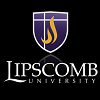
Lipscomb University (Lipscomb) is one of the few schools to provide Animation BA, BFA, and MFA degrees. Lipscomb is also the first university in the U.S. to purchase the Positron Voyager—the world’s first chair designed specifically for fully immersive cinematic virtual reality. In addition to Animation degrees at all levels, Lipscomb has an 18 credit hour Animation minor that can be added to just about any Lipscomb program. 2D Character Animation; CG Modeling and Lighting; and Storyboarding for Animation are just a few requires courses for the minor.
Housed in the George Shinn College of Entertainment and the Arts’ Animation and Interactive Media Department, the Animation programs at Lipscomb are led by Disney Animators, experts in Maya, and accomplished independent filmmakers. Other program benefits include internships at major studios; speaking events by industry experts each semester; and trips to places such as Los Angeles and Italy to attend animation events.
The Animation BA requires 54 credit hours required in the major. Course examples include Computer Animation; Perspective, Color and Composition; Storyboarding for Animation; Characters and Costumes; 2D Character Animation; Writing for Animation; CG Modeling and Lighting; History of Animation; Animation Tools; Dynamic Gestures; and Animation Production.
Students can enhance the degree through the required 15 credit hours of electives. Examples include Unreal Technology I-II; Character Modeling in ZBrush; Computer Animation II-IV; Animation Environments and Layout; Film Production Workshop; Digital Imaging (After Effects, Color, etc.); Animation in Harmony; Film and Culture; Concept Development; Design I; and Editing.
Students will also take the Portfolio Development course and complete a final project. Graduates of the Animation BA program at Lipscomb University are prepared to pursue careers in the entertainment, games, and advertising industries, among others. Potential titles include 2D Animator, 3D Animator, Game Animator, Storyboard Artist, Lead Animator, Producer, Computer Animator, and Director.
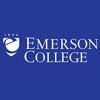
Emerson College (Emerson) has a unique study abroad experience that all students can participate in. The school's overseas campus in the Netherlands consists of a restored 14th-century moated medieval castle known as Kasteel Well. Located in the small village of Well, the campus welcomes around 90 Emerson students for summer programs, and for three months each fall and spring term.
Emerson College is also home to the School the Arts, which houses the Department of Visual and Media Arts (VMA). Within the department is a Media Arts Production BA (MAP BA) that provides access to state-of-the-art equipment and facilities such as the Emerson College Emerging Media Lab (EML), where students can complete projects in areas such as 2D and 3D animation, character design, artistic anatomy, game design, rigging, and VR/AR.
Other VMA MAP benefits include hands-on work experience through Emerson College’s own in-house production company (Emerson Productions) or the Equipment Distribution Center (EDC); and opportunities to produce and screen work through film festivals and student organizations such as It’s All True – International Documentary Film Festival, Frames Per Second, Emerson Film Festival, and Women in Motion.
All Emerson MAP students have additional opportunities to gain experience at Emerson Los Angeles (ELA). Established in 1986 and situated on Sunset Boulevard, ELA is a state-of-the-art, 120,000 square feet LEED-certified building where students live, work, and learn for an entire semester. Up to 215 students arrive at ELA each fall, with the potential to secure internships at places such as Sony, Lionsgate, Netflix, Disney, or Hulu. The program provides access to more than 200 internship opportunities.
The MAP BA program at Emerson College has two tracks: Production and Media Studies. The Production track is the most popular option for animators. The program highlights courses such as Computer Animation; Writing the Feature Film; Game Design; Drawing for Character Design; Studio TV Production; Interactive Media; Writing the Short Subject; and Film Production. BA students have many opportunities to enhance the degree through the required 16 credit hours of Visual and Media Arts electives.
The MAP BA program at Emerson College culminates with the BA Capstone Project. This one-semester advanced production workshop allows students to produce portfolio work in any VMA area. BA Capstone students also have specialized access to facilities and unlimited production support for their projects.
Graduates of the VMA Department at Emerson College have been involved with major productions such as Everything Everywhere All At Once, Ant-Man, Fargo, Swiss Army Man, and Fantastic Four. Program alumni have also been hired at major studios such as Bunim Murray Productions, Digital Domain, MGM Studios, Searchlight Pictures, and Worldwide Pants.

University of Advancing Technology (UAT) is one of the few 100% STEM-based universities in the U.S. The school also follows a Synchronic Learning Model that emphasizes independent and collaborative learning in real-world environments. While UAT programs are provided on-campus, online, or a combination of the two, all students have access to mentors and state-of-the-art production facilities. And whether students study on-campus or online, internships are a graduation requirement.
For animators, University of Advancing Technology has a Game Art and Animation (GAA) BA program that allows students to work in real game production environments with programmers and designers. Consisting of 120 credit hours, the program focuses on immersive courses that teach students how to create 2D/3D art and animation for mobile, virtual reality (VR), PC, online, and console games.
Course examples for the program include Introduction to Game Art and Animation; Visual Effects Compositing; Game Art and Animation Fundamentals; Virtual Reality World Building; UI Design and Animation; 3D Modeling Environments and FX; Materials, Shaders and Lighting; 3D Modeling Characters and Vehicles; Storyboarding; VR/AR User Experience Design; and Production Studio.
The UAT GAA BA program also requires completion of the Student Innovation Project courses I-III. Though not required, courses such as Introduction to AI and Analytics, Digital Asset Creation, and Java Programming are highly recommended. In addition to the required internship, students will have opportunities to participate in community projects and apprenticeship experiences.
The Game Art and Animation BA program at University of Advancing Technology culminates with a final project, portfolio, and presentation. Graduates are prepared to pursue positions in all areas of animation and game design. Sample job titles include Animator, Character Animator, Game Artist, Texture Artist, Senior Animator, Storyboard Artist, Art Director, and Environment Animator.
UAT alumni can be found at places such as Sony Entertainment, Gearbox Publishing, FabCom, Amazon, American Gaming Systems, eBay, and GoDaddy.

University of Connecticut (UConn) is home to the School of Fine Arts. Established in 1961, the school houses four departments including Art and Art History; Music; Digital Media and Design (DMD); and Dramatic Arts. Programs in all departments are supported by specialized showcases, exhibition spaces, stages, and forums including the Digital Media Center; William Benton Museum of Art; von der Mehden Recital Hall; Contemporary Art Galleries; Jorgensen Center for the Performing Arts; and the Connecticut Repertory Theatre.
The Department of Art and Art History provides an Art BA that allows students to concentrate in Illustration/Animation. All department programs are accredited by the National Association of Schools of Art and Design (NASAD).
Students in the Art BA and other department programs will engage in collaborative, project based-learning with access to state-of-the-art studios, labs, and production facilities. Examples include a high-powered Cintiq computer lab for high-end 3D work, a 688 foot Motion Capture Studio; and a render farm. Students also benefit from independent study and internship opportunities in the junior and senior years of the programs.
The Art BA requires 120 credit hours of study, with 42 art and design credit hours. Students in the Illustration/Animation concentration will explore and create projects in both digital and analog environments. Examples include 2D animation; cartoons; stop-motion animation; character design; graphic novels; product design; comics; and environment design.
Illustration/Animation course examples include Animation Fundamentals; Life Drawing I-II; Topics in Illustration; Graphic Design: Process and Thinking; Art History; Introduction to Digital Media; Studio Concepts; and Going Pro. The culminating experience for the program is a project that focuses on the student's area of concentration. Final works will be exhibited in the Annual Senior Show.
Graduates of the DMD and Art and Art History programs at University of Connecticut are prepared to pursue roles in areas such as animation, games, filmmaking, publishing, advertising, virtual and augmented reality (VR/AR), architecture, television production, user interface and user experience design (UI/UX), medical illustration, live performance, social media, sports, and animation or illustration for science, medicine technology, legal, aerospace, education, and research. MFA graduates are prepared to pursue advanced leadership roles in these areas.
DMD and Art and Art History alumni have been hired at companies and studios such as Pixar, Adobe, Disney, HBO, Epic Games, Food Network, ESPN, Lego, Google Creative, NBC Universal, Adobe, Viacom, CBS 2 News, NBC Sports Group, World Wide Wrestling Entertainment (WWE,) DW Advertising, Stoopid Buddy Studios, Fusion 360, AW Design, XVIVO Medical Animation Studio, YouTube Gaming, Blur Studio, Matter Communications, and Greenhouse Studios.

Tulane University (Tulane) is home to the School of Liberal Arts, which houses the Newcomb Art Department. Within the department is a Digital Arts area that explores time-based media (animation and video), 3-D graphics, virtual reality, interactivity, and digital imaging. The area is open to all Newcomb Studio Art BA students.
All students will have opportunities to work and create animated projects in the Digital Arts Studio, which is equipped with Mac workstations; the latest industry-standard software such as After Effects, Illustrator, and Premier; and digital video equipment.
The Studio Art BA program begins with the Foundations of Art Series where students will have opportunities to complete several projects. Course examples across programs include Digital Arts, which explores 2D animation, video editing, color and composition, and digital imaging; Time-Based Media, which covers animation, video, and sound design; Drawing II: Materials and Strategies; Digital Arts II: Creative Computing; Studio Art Principles; Drawing II: Figure Drawing; and Special Topics.
In addition to a variety of in-demand courses, students will have the opportunity to complete the Independent Study course; Service Learning (ARST 2890); Studio Research; and the Junior Year Abroad (ARST 5380 or 5390). The Senior Capstone Studio course is required to graduate.
Projects will be exhibited at the BA Exhibitions in the Carroll Gallery at Woldenberg Art Center, where students will design, install, promote, and document their projects. Graduates are prepared to pursue roles across the digital arts. This includes areas such as animation, special effects, games, 3D modeling, illustration, graphic design, UI/UX design, and virtual reality. Tulane alumni have been hired at places such as Amazon and Disney.

The School of Visual Art and Design (SVAD) at University of South Carolina (USC) is part of the College of Arts and Sciences. The school provides 11 degree programs in the areas of Film and Media; Studio Art and Design; Art History; and Art Education. These interdisciplinary programs provide opportunities to study abroad through programs such as Kenya: Enhancing Perceptions Through Art and Art Making, and Art and Culture of Japan.
Other SVAD highlights include learning and production that takes place in an 85,000 square feet facility designed specifically for visual arts; interactions with visiting artists; opportunities to design and install works in the student exhibition space Passage Gallery; internships with local and national studios; access to the McMaster Gallery; and participation in SVAD Studio, which hosts workshops, talks, and exhibitions.
For USC students seeking an undergraduate animation degree program, SVAD has BA in Media Arts that emphasizes hands-on, immersive courses taught by industry professionals. Course examples include Animation; Digital Compositing; Manga and Anime; The Moving Image; Cinematography; Narrative; Sound for Motion Picture; New Media Art; Video Game Design; Sound Art; Media Performance; and Screenwriting.
All BA students have many opportunities to work on animation projects individually or in a group. BA students may also concentrate in Media Production or Media Studies. The BA program culminates with a final project in the student’s concentration. Graduates are prepared to pursue careers in areas such as entertainment, fine art, game design, advertising, architecture, science, and medicine.
Program alumni have been hired at major companies and studios such as Nickelodeon, Blizzard Entertainment, ABC, Marvel, Amazon Studios, IBM, Showtime, HBO Films, Netflix, CBS Television, and NBC.

Rutgers University Camden (Rutgers-Camden) is an R2 research institution with a 91% employment rate (or graduate school) within six months of graduation. The school also houses the Faculty of Arts and Sciences (FAS), which comprises three schools, 16 departments, more than 30 undergraduate majors, and over 15 graduate programs. This makes the FAS the largest academic unit at Rutgers-Camden.
Within the FAS is the Department of Visual, Media, and Performing Arts, which provides an Art BA that allows students to concentrate in Animation. Students can also add the Animation or Digital Arts minor. Both minor options require 18 credit hours of study. Course examples across programs include Drawing; Computer Animation; Storyboard and Character Design; and Classical Animation.
Students in all programs benefit from internships; the Visiting Artists Program; seminars; access to separate studios for drawing and painting; a photography lab and digital photography studio; symposiums and presentations; access to the Electronic Arts Studios at Rutgers-Camden; the ZoomOnArt Lecture Series; the Student Works Gallery; and Stedman Gallery programming.
The Electronic Arts Studios at Rutgers-Camden provides access to two renovated graphic design studios, two animation labs, and a post-production lab outfitted with networked computers, post-production units, 2D/3D and editing software, and more.
The Art BA requires 120 total credits, with 48 credits in the major. The Animation concentration is 21 credit hours. Course examples include Computer Animation I-II; Character Rigging; Animation Storyboard; AI-Generated Animation; 3D Design in VR; and Character Animation.
BA students will also take Classical Animation, with access to electives such as Video Game Design (in collaboration with the Digital Studies Center); 3D Modeling and Printing; and Independent Study. For the concentration, BA students are also required to complete the Animation Production course and the Animation Capstone I-II courses.
Graduates of the Art BA program at Rutgers University Camden are prepared to pursue graduate studies or positions in industries such as entertainment, game design, and advertising. Rutgers-Camden BA and BFA alumni have been hired at studios such as Walt Disney, Warner Bros., Digital Domain, Ubisoft, Psyop, and BBC Studios.
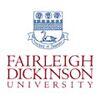
In 1965 Fairleigh Dickinson University (FDU) opened Wroxton College in England, making it the first American University to own a campus overseas. Today, students at FDU's England campus live and study in the 17th-century Jacobean mansion known as Wroxton Abbey. Students in all programs at Farleigh Dickinson have the opportunity to study for a full semester or an abbreviated summer session. This includes students enrolled in FDU's School of Art, which houses the Animation Program.
Students can earn a Film and Animation BA; a combined Film and Animation BA/Animation MA; or a combined Film and Animation BA/Animation MFA. The FDU Animation Program also provides 2D Animation, 3D Animation, and 3D Video Game Animation minors.
Across programs, students may participate in FDU’s internship program, which provides the opportunity to gain valuable experience working with major studios and networks such as DreamWorks, MTV, NBCUniversal, Viacom, Nickelodeon, and ABC. Other program benefits include small class sizes; immersive hands-on projects; workshops; and access the newly renovated Animation Lab.
The Film and Animation BA has three concentration options including 2D Animation, 3D Animation, and Video Game Animation. Course and elective examples include Character Animation Using CAT; Motion Graphics with After Effects; Vector Animation with Animate CC; Tradigital Animation; 3D Particle Animation and Effects; ZBrush Digital Sculpting; Logo and Product Animation; Creative Imagery with Photoshop; Storytelling; 2D Animation with Toon Boom; 3D Computer Animation; Motion Tracking; Compositing in After Effects; and Storyboarding.
The Animation programs at Fairleigh Dickinson University culminates with a thesis completed across two or three courses, depending on the degree. Graduates are prepared to pursue careers across the entertainment and game design industries.
Program alumni are often hired by the companies they have interned with as well as others such as Tristar Pictures, Warner Bros. Games, ABC, Marvel Comics, Sony Pictures Imageworks, CBS Skyline Entertainment, Verizon, IBM, Psyop, Whisper Films, Tribe Pictures, High Five Games, and Pixel Light Digital Media.

University of Maryland Baltimore County (UMBC) was designated a Carnegie R1 institution in February 2022. Also a STEM school, UMBC’s key research areas include Health and Life Sciences; Civic Engagement; Environmental Sciences; Data Sciences and National Security; and Public Humanities and the Arts.
Within the school’s College of Arts, Humanities, and Social Sciences (CAHSS) are programs that focus on Media and Communication; Ancient Studies; Psychology; American Studies; Economics; Asian Studies; and the Visual Arts. Across areas, students have many opportunities for research, internships, creative work, and additional extracurricular activities.
Visual Arts students have interned at places such as the Smithsonian, Stanley Black & Decker, Baltimore Orioles, Image Factory DC, Mindgrub Technologies, Maryland Art Place, Office of Promotion of the Arts, Maryland Public Television, Renegade Productions, and Creative Alliance.
The CAHSS Department of Visual Arts provides collaborative and interdisciplinary programs leading to a BA, BFA or MFA. For students seeking a Bachelor of Art degree, the department has a Visual Arts BA program that allows students to focus in areas such as animation through electives. The Visual Arts BA curriculum also explores animation, film, interactive forms, video, graphic design, photography, and print media.
Students will complete core courses such as Introduction to Art and Media Studies; Visual Concepts I; Visual Concepts II Camera Vision; Visual Concepts III Three Dimensional Form, Space, and Interaction; Visual Concepts IV Time-Based Media; Studies in Visual Culture; and Drawing I/Beginning Drawing. Students in will also take Introduction to Animation and History of Animation.
As electives, BA students have access to animation and animation-related courses such as Writing for Media Arts; Real Time Animation; Motion Graphics and Compositing; Animation in the Physical World; Sound Design; Advanced 3D Animation; Installation Art; Topics in Animation and Interactive Art; and Team-Based Game Development.
In addition to a variety of in-demand course options, the Visual Arts program at UMBC provides the opportunity to gain additional work experience through the ART 496 – Imaging Research Center Internship (IRC). In collaborative teams, students will work on animation, graphics, and multimedia productions in a professional work environment for real clients and researchers under the guidance of IRC directors.
In the final year of the UMBC Visual Arts BA program, students will complete a final project to be exhibited (along with other industry-ready works) at the Senior Exit Exhibition. The event is held at the Center for Art, Design and Visual Culture, where Awards for Excellence are presented at an opening reception.
Graduates of the Visual Arts BA program at University or Maryland Baltimore County are prepared to pursue careers in the entertainment industry, game design and development, web design, architecture, science and medicine, advertising, government, research, and education. Some program alumni also go on to launch their own studios or pursue graduate studies at UMBC or other major universities.